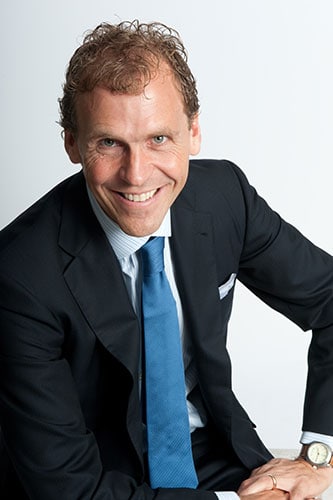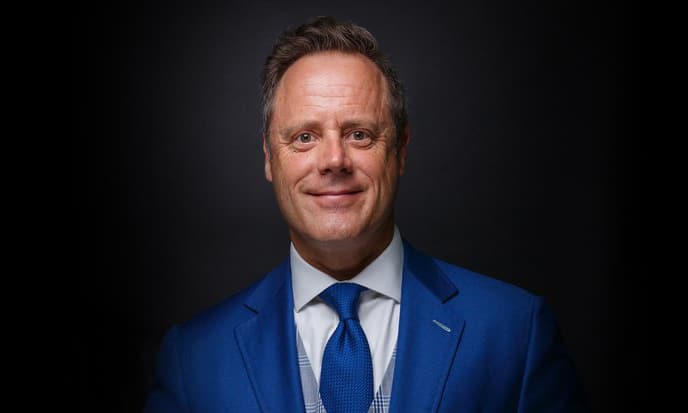FUTURE CUSTOM: DEFINING A NEW ERA

Sponsored by Gladson and MR magazine, last week’s provocative panel on the future of custom/made-to-measure was an insider’s look into how men are shopping in our post-pandemic world, and how the industry is changing as a result. New consumer attitudes mean new priorities: individuality, sustainability, versatility, and comfort are key buzzwords. Many men are spending more to get unique, perfectly-fitting clothing that reflects their personality. The industry is responding with made-to-measure offerings in gorgeous new fabrics at various price levels, as well as with customized sportswear, outerwear, and accessories. For all our speakers, business has notably picked up in April and May, equaling or surpassing 2019 levels in some categories. What follows: edited excerpts from the discussion, and an attached video of the event. Special thanks to Faith Wozniak and Heather Falconer for all their hard work to make it happen.
Our insightful panelists:
Chris Blowers – CEO, Greiner’s Clothing, Tampa/Sarasota/Beverly Hills Bob Mitchell – Co-CEO, Mitchells/Richards/Wilkes Bashford/Mario’s James Sleater – Owner, Cad & The Dandy, London/New York/Stockholm Dave Welch – b.spoke, Costa Mesa, CA Shao Yang – The Tailory New York City
Dave Welch: I’ve been in the custom world since 1993 and seven years at b.spoke. Our mission: “We don’t sell clothes; we sell confidence.” The pandemic has been tough but I see much light at the end of the tunnel.
Shao Yang: Our core mission is to create garments that affirm the wearer, garments tailored to the wearer’s identity, taste, measurements, and budget. The pandemic forced us to be innovative: we’ve expanded to virtual fittings, we’re doing business in Europe, we’ve moved into ready-to-wear and we’re launching e-commerce. (Editor’s note: Recent copy from The Tailory website: “On Reopening Days We Wear Tailored. It’s finally out of the sweats and into the streets: go back in captivating style!”)
Bob Mitchell: Although the last 15 months have been tough, the pandemic has brought some positive changes: the acceleration of digital shopping, virtual appointments and fittings, made-to-measure expanding to sportswear, knitwear, and shoes. Menswear is finding real traction these past few weeks and we believe physical stores will remain the center of our universe.
Prior to the pandemic, made-to-measure was 30 percent of our clothing volume. While rack clothing is recovering at a faster pace (May sales on sportcoats were ahead of 2019), we believe assortment in rack clothing drives sales in made-to-measure. Clearly, made-to-measure orders have increased these past 6-8 weeks; we’re planning a further spike for fall.
Chris Blowers: Our clothing mix has been about 60 percent made-to-measure, 40 percent rack but our ready-made sportcoats have been flying out. I agree with Bob that you need rack goods to create excitement in made-to-measure. In Tampa, banks and law firms are just starting to reopen; our goal is to create drama in tailored clothing rather than a floor filled with basics. We have to make tailored garments more of a want than a need.
James Sleater: We’ve had our best April ever. We’re a Savile Row tailor but we’ve evolved from constructed suits to softer pieces like safari jackets that bridge the gap between tailored and sportswear. I believe this post-pandemic era will bring out the best in all of us. We’ve launched a ready-to-wear collection, a bespoke shop, a pop-up store in a coffee shop. We’re doubling down on our exposure and it’s showing in increased sales.
Q: Custom requires perfection, but how often do you miss the mark? And, how do you deal with dissatisfied customers?
James: We get it right 99 percent of the time, mostly because we start the process with a test suit in voile, delivered in two weeks, to ensure the fit is exactly what the customer expects. No one likes to admit mistakes but sometimes, even if you fit the body, you don’t always fit the mind.
Bob: We have minimal problems with made-to-measure clothing: we have 60 amazing tailors across the country who know how to perfect the fit. The only problems come from customers who make overly complicated requests. Also, even at vendor trunk shows, the only one we let measure our customers is our head tailor. He knows the customer’s taste and preferences: the supplier might know his product but not our customers.
Chris: In our case, I create one basic fit for all of our brands and all our suppliers work off that. The problem is that every order has become so complicated, involving different vendors for fabric, linings, buttons, different placements for nametags, pockets, etc. It takes me 30-60 minutes just to write each order.
Shao: I do all the fittings myself and if there’s a problem, I re-make it! Of course, as we scale up, it’s impossible for me to do everything so I’m spending much time these days training staff.
Dave: I’ve also trained someone else to do fittings. But you have to be patient: there will be mistakes and re-makes. Just recently a guy came in insisting he wanted a modern fit but in the end, he didn’t. With all the social media reviews out there, you can’t afford to play hardball with clients so we just re-make it. It’s only 1-2 percent of the garments but it’s emotionally draining. Since jacket length is often an issue these days, we now order extra try-on garments in several different lengths.
Q: Any good marketing ideas to attract new clients to custom/made-to-measure? Do you reward customers for referrals?
James: Our best source for new clients is referrals. But it’s much tougher in the U.K. than the U.S.—men in London guard the name of their tailor. It’s a precious commodity that they don’t want to share. We don’t give away free shirts or discounts for referrals: it’s hard to track and a slippery slope so we just don’t do it. But it’s a nice touch if your business model affords it.
Dave: We don’t have a designated referral program but we do occasionally offer surprise gifts. We recently created a custom sportcoat (in a fabric we knew the guy loved) for a client who sent us lots of business. We sometimes box up the ingredients of our signature cocktail (the Glen Plaid, our take on an Old Fashioned) and gift that to clients who send us new customers. We’ve also done pop-ups at cigar group meetings or at events for wedding coordinators (who now refer grooms to us). This relationship-building takes time but usually generates new business.
Bob: The best referrals come from happy customers. The best way to do more made-to-measure is to train more expert sellers.
Q: Does anyone believe it’s time for a model change in tailored clothing, that perhaps the slim-fit suit has reached the end of its lifespan?
James: In London, guys are wearing trousers tighter than girls’ leggings. Of course, fashion is cyclical and suits will go back to an easier fit eventually, but not yet.
Bob: A model change makes sense but American guys are still getting used to a slim fit. So, we see suits still getting trimmer. At the moment, I think we need to promote dressing up again, maybe then we can focus on a model change.
Q: What’s the potential of customizing sportswear or accessories?
Bob: Many of our brands are offering it and I believe it’s the future. Zegna has always been the leader in luxury made-to-measure clothing and they’re now offering other categories: outerwear, soft sportcoats with zip-out vests, silk/cashmere, and tech/merino knits. Munro is offering made-to-measure in categories from sneakers to suits; our customers are ordering their $295 pique knits in multiple colors. There’s now made-to-measure five-pockets and jeans, bomber jackets, field coats, belts. With guys wearing less tailored clothing, we need them to upgrade their sportswear.
James: Our operation has 175 tailors so when the pandemic hit, we had them making ready-to-wear. Within our new ready-to-wear collection, everything is soft and unconstructed. So it’s different from our bespoke clothing but still made entirely by hand.
Q: Any final comments or crystal ball projections?
Chris: My brother was finally heading back to the office and put on a new suit that I had made for him. His wife snapped a picture and sent it to me, writing “I miss this guy!” I believe a lot of men are eager to start dressing up again! But as retailers, we’ve got to stop discounting; there are so many better ways to get their attention! It’s so easy today to snap a photo of a great sportcoat and email it to a customer you haven’t seen in a while. Or go old school and make a few calls, telling customers about great new product that’s arriving. Show them how to dress casually but with style. I’m constantly amazed by how many customers still have money to spend but we’re not enticing them.
Bob: I agree with Chris: the markdown cadence has to change, especially in luxury. Made-to-measure should never be discounted! Pre-pandemic, we sold 70 percent of our clothing at regular price, far different than department stores. As merchants, we can’t stop the move to casual but we can show men elevated casual so they’ll spend a bit more to upgrade their look. The time is right for made-to-measure. And for hiring great people with a genuine passion for the business.
Shao: I believe that anything can be customized: of course suits but also dresses, capes, ponchos. It’s about self-expression, individuality, gender-fluidity. We just need to make it fun and get the word out!
Chris: When business is good, you don’t think about change: why fix what isn’t broken? But now that we’re forced to be creative, business can be better than ever!
—
Editor’s Note: If you want to watch the full panel discussion, please click here. Use password: Custom123








Thank you Karen; as usual great questions and insight you bring. Appreciate and enjoyed hearing positive comments from panel. Fashion never dies, it will always continue to elevate one to not only look, but feel good!
Now that we can put some of this pandemic behind us, we will be seeing a lot more better dressed and happier people.
We must work hard and be ready to bring it on.